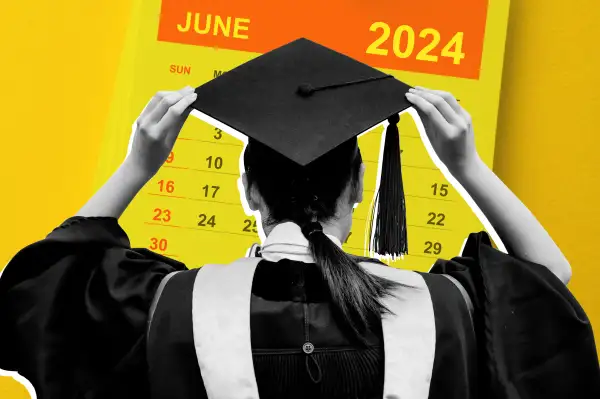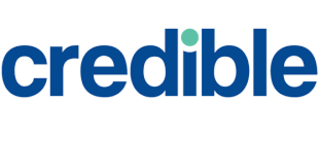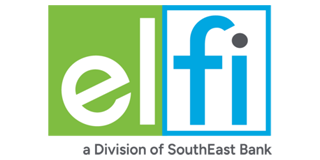Some Student Loan Borrowers Need to Consolidate Now to Get Forgiveness

Some federal borrowers who have been paying down their student loans for at least a decade could be eligible for forgiveness of their remaining balance — but they have to act soon.
To correct what it calls “needless hurdles and administrative inaccuracies,” the Department of Education has been conducting a one-time payment count adjustment to give borrowers credit for all the time they've spent in repayment, including periods of qualifying deferment or forbearance like the three-and-a-half year pandemic payment pause. But some borrowers need to consolidate before the end of the month to get the biggest benefit from the recount.
The department extended the consolidation deadline to June 30. The previous deadline was April 30.
Having an accurate payment history is crucial for receiving forgiveness through Public Service Loan Forgiveness and income-driven repayment plans like President Joe Biden’s new SAVE program, which provides forgiveness after making 10 or more years of payments.
Before this one-time account adjustment and the introduction of SAVE, receiving loan forgiveness through income-driven repayment plans was rare — fewer than 50 borrowers successfully had their loans canceled through them.
By readjusting payment histories, the Biden administration has already canceled student debt for about 2 million borrowers, and many more may qualify once they consolidate their loans and have their payment history updated.
Similarly, part of Biden's second attempt at broad student loan forgiveness — a $150 billion plan that still could be blocked by the courts — focuses on canceling the remaining balances on undergraduate loans in repayment for 20 years and graduate loans in repayment for 25 years. Consolidating now may also help some borrowers reach that benchmark sooner as well.
Who needs to consolidate for the one-time payment adjustment?
For many of the borrowers who have already received forgiveness through the account adjustment, the process was automatic.
However, some borrowers with older student loans need to consolidate them for their payment histories to be adjusted:
- Privately held Federal Family Education Loans (FFEL)
- Perkins loans
- Health Education Assistance Loans (HEAL)
- Some Parent PLUS loans
Parent PLUS loans managed by the Education Department will automatically be canceled if the loan has 25 years (or 300 months) of qualifying payments via the one-time adjustment without the need of consolidation.
However, for Parent PLUS loans with payment histories under 25 years, the department recommends that you consolidate them by June 30, so that they can be eligible for forgiveness later on through its Income-Contingent Repayment plan (or the program for public-service workers, if applicable) once qualifications are met.
If you're unsure what type of loans you have, you can look that up by logging into your account at studentaid.gov. Under the 'My Aid' section, click view details, and you'll find the loan types listed. To see whether your loans are privately held (and therefore need to be consolidated), look for the line that lists who the loans are serviced by. If you see a bank, company or college name there instead of "Dept. of Ed," then the loans are privately held.
Borrowers with various loans and repayment timelines
While not a directly intended benefit of the temporary consolidation rules, borrowers who have different loans with various repayment histories may benefit by consolidating by the deadline, too.
Until June 30, if you consolidate multiple loans with different repayment timelines, the new consolidated loan would take on the history of the loan with the longest repayment history. For example, if one of your federal loans had a repayment history of 10 years and another had a history of seven years, the consolidated loan would defer to the loan with the longest repayment history — the 10 year one — and in effect putting you on a faster road to forgiveness through various programs. Keep in mind that these histories are tied to when the loan first entered repayment; not when you took out the loan.
After the deadline, the consolidation rules revert back to normal. Generally speaking, after the one-time payment recount is completed, consolidating your loans will wipe out your payment history, setting it to zero. The exception is for the SAVE plan. Starting in September for the SAVE plan, consolidated loans will retain their payment history as a weighted average of underlying loans.
What to know about consolidating your federal loans
When you consolidate multiple loans, they are merged and become one new Direct consolidation loan with a single monthly bill.
The loan gets a new fixed interest rate based on a weighted average of the consolidated loans. And because the consolidated loan is a Direct loan, it comes with the benefits that entails — namely the repayment and forgiveness options mentioned above.
(Note that consolidation is completely separate from refinancing. Refinancing is done through private companies and turns your loans into private loans, which are ineligible for all federal benefits.)
In the past, consolidating federal loans actually erased their payment histories, meaning the clock would start over for borrowers looking to receive forgiveness through various federal repayment programs.
That said, consolidation isn’t meant for everyone.
Consolidating loans could result in a longer repayment period than the original loans depending on what payment plan you select. Some folks do this purposefully to lower their monthly payment by extending the length of the loan, but this ends up costing more in the long run.
Similarly, when loans are consolidated, any outstanding interest of the old loans gets folded into the new balance on the consolidated loan. This could result in more interest accruing on a larger principal balance.
You only need to consolidate by June 30 if you have loans that would benefit from the payment history re-count.
Applying for a loan consolidation on the Education Department's website is always free and takes only about 30 minutes. Paper applications are available in the FAQ section and will need to be sent as a packet directly to a preferred loan servicer, not the Education Department.
Loan servicers process consolidation applications, and it could take upwards of six weeks to complete. But as long as you file the paperwork by June 30, you'll meet the deadline for the payment recount.
More from Money:
Will the FAFSA Be Delayed Again? College Experts Are Worried
Navient Is Quietly Forgiving Private Student Loans Amid Pressure From Lawmakers






